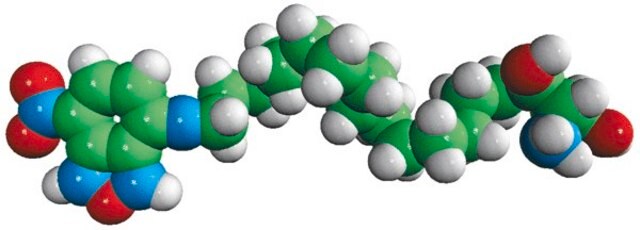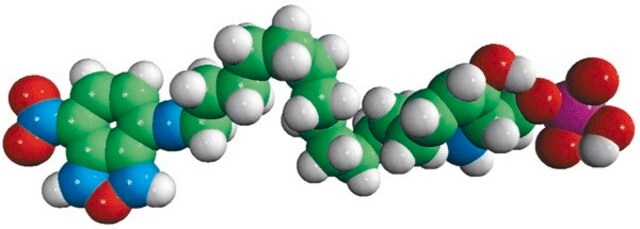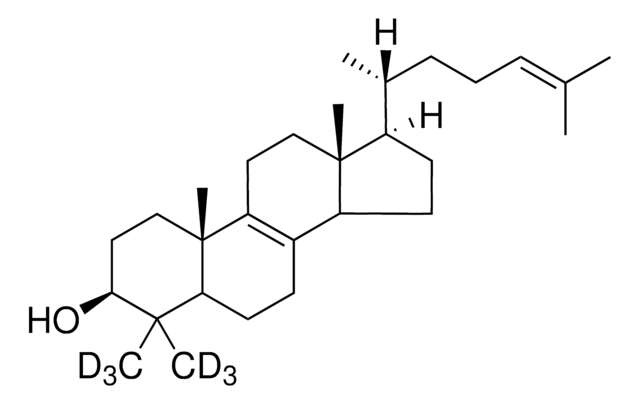810205X
Avanti
NBD Sphingosine
omega(7-nitro-2-1,3-benzoxadiazol-4-yl)(2S,3R,4E)-2-aminooctadec-4-ene-1,3-diol, chloroform:methanol (8:2)
Synonym(s):
D-erythro-Sphingosine-N-NBD
About This Item
Recommended Products
Assay
>99% (TLC)
form
liquid
packaging
pkg of 1 × 1 mL (810205X-250ug)
manufacturer/tradename
Avanti Polar Lipids 810205X
concentration
0.25 mg/mL (810205X-250ug)
shipped in
dry ice
storage temp.
−20°C
General description
Application
- as a negative control to determine the binding of Atg12-Atg5 conjugate with phosphatidylethanolamine (PE)-containing liposomes
- to label sphingosine kinase 1 (SphK1) in order to determine its role in endocytic membrane trafficking
- to generate 7-nitrobenz-2-oxa-1,3-diazol-4-yl (NBD)-ceramide C16
Biochem/physiol Actions
Packaging
Legal Information
Signal Word
Danger
Hazard Statements
Precautionary Statements
Hazard Classifications
Acute Tox. 3 Inhalation - Acute Tox. 4 Dermal - Acute Tox. 4 Oral - Carc. 2 - Eye Irrit. 2 - Repr. 2 - Skin Irrit. 2 - STOT RE 1 - STOT SE 1 - STOT SE 3
Target Organs
Central nervous system
Storage Class Code
3 - Flammable liquids
WGK
WGK 3
Flash Point(F)
125.5 °F
Flash Point(C)
> 51.95 °C
Regulatory Listings
Regulatory Listings are mainly provided for chemical products. Only limited information can be provided here for non-chemical products. No entry means none of the components are listed. It is the user’s obligation to ensure the safe and legal use of the product.
Certificates of Analysis (COA)
Search for Certificates of Analysis (COA) by entering the products Lot/Batch Number. Lot and Batch Numbers can be found on a product’s label following the words ‘Lot’ or ‘Batch’.
Already Own This Product?
Find documentation for the products that you have recently purchased in the Document Library.
Our team of scientists has experience in all areas of research including Life Science, Material Science, Chemical Synthesis, Chromatography, Analytical and many others.
Contact Technical Service









